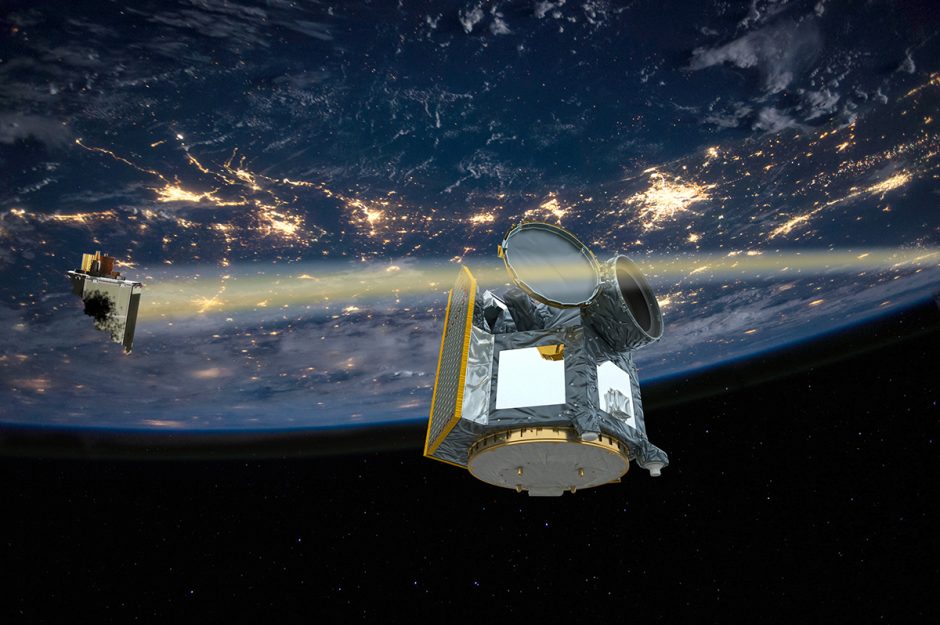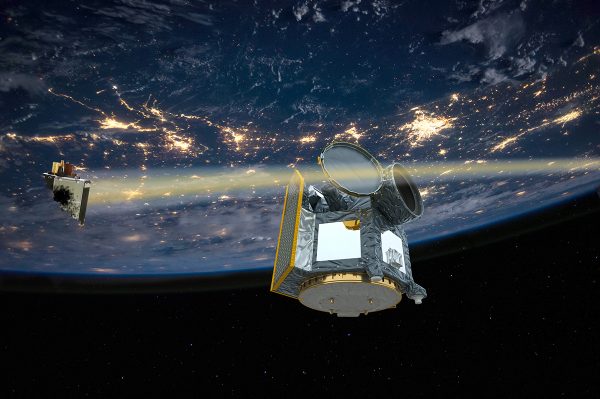CHEOPS had to avoid space debris

Space debris increasingly threatens rockets, the international space station and satellites. At the beginning of October, the CHEOPS space telescope had to make an evasive manoeuvre due to a piece of Chinese space debris.

The CHEOPS satellite had to take evasive action to avoid a piece of debris. Image Credit: ESA/NASA, montage G. Schwarz
Such approaches can be extremely dangerous, because objects in Earth orbit shoot through space at many times the speed of a bullet. If a piece only 1 cm in diameter collides with another object, the energy of an exploding hand grenade is released.
In the case of CHEOPS, the calculations showed that at its closest approach, the piece of debris would come within a dangerous 500 metres of the space telescope. The radial distance would have been only 13 metres. The probability of a collision: 1:10,000. “This may not seem very dramatic at first glance. But at the enormous speeds of the satellites, a minimal orbit deviation can have fatal consequences,” explains Broeg. “In the event of a collision with the Chinese part of the satellite, this could have meant the destruction of the CHEOPS space telescope”.

Christoph Broeg is CHEOPS manager at the University of Bern and a member of the National Centre of Competence in Research (NCCR) PlanetS. Image Credit: University of Bern
Collision warning by the European Space Agency ESA
ESA’s Space Debris Office keeps track of thousands of pieces of debris flying around uncontrolled in an Earth orbit. If one comes close to an active satellite or space capsule, the office issues a warning and proposes an orbit correction.
Usually, such collision warnings are issued 3 to 7 days before the object’s next approach. In the current case, the warning was issued at very short notice, which meant that a decision had to be made quickly to take evasive action. Since contact with the satellite is only made twice a day, the command for orbit correction had to be sent to the CHEOPS on-board computer half an earth orbit earlier.
“We decided on an orbit 56 metres below the previous orbit”, says Christopher Broeg. For the course correction, the instrument had to be shut down on 1 October for safety reasons. On 2 October at 0:52 UTC, the on-board computer ignited the controlling thrusters of CHEOPS for 1.5 seconds and successfully corrected the orbit. The space telescope was then able to return to operating mode. The piece of debris finally flew past CHEOPS on 2 October at 1:41 UTC at a relative speed of 3,140 metres per second at a distance of around one kilometre without causing any damage.
In the mission planning, it was assumed that there would be a maximum of three collision warnings per year and an effective orbit correction. “For the CHEOPS team, this was the first warning, which is why the tension was high at the beginning,” says Broeg.
And the balance of the incident? CHEOPS consumed a negligible amount of fuel; one day of observation time was lost and the observation plan had to be recreated.
Categories: News
